THE CHARLESTON CRIME OF THE CENTURY
| On Friday night, Aug 21st 1953, one of Charleston's most prominent
citizens was murdered in her home. Juliet Clark, owner of The Charleston
Daily Mail and widow of previous owner W.E. Clark was laid to rest without
her killer being discovered. To this day, no leads of any substance have
ever turned up. The article below reads like many famous murder mysteries.... |
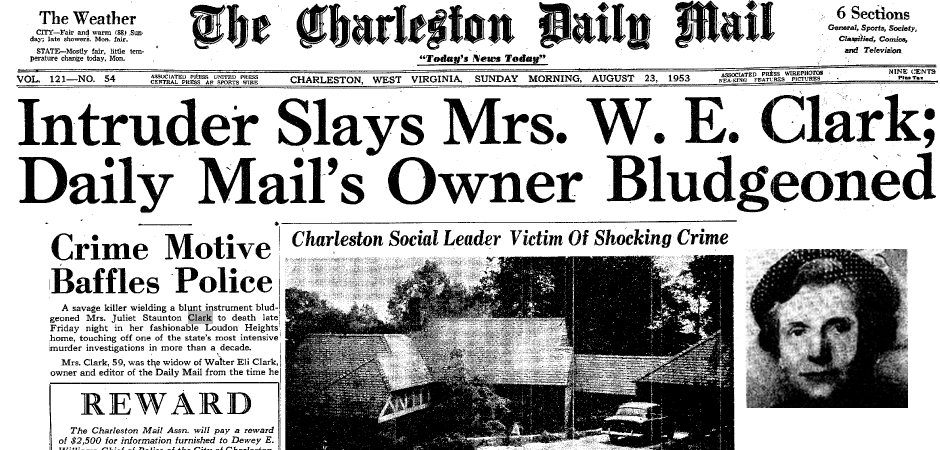
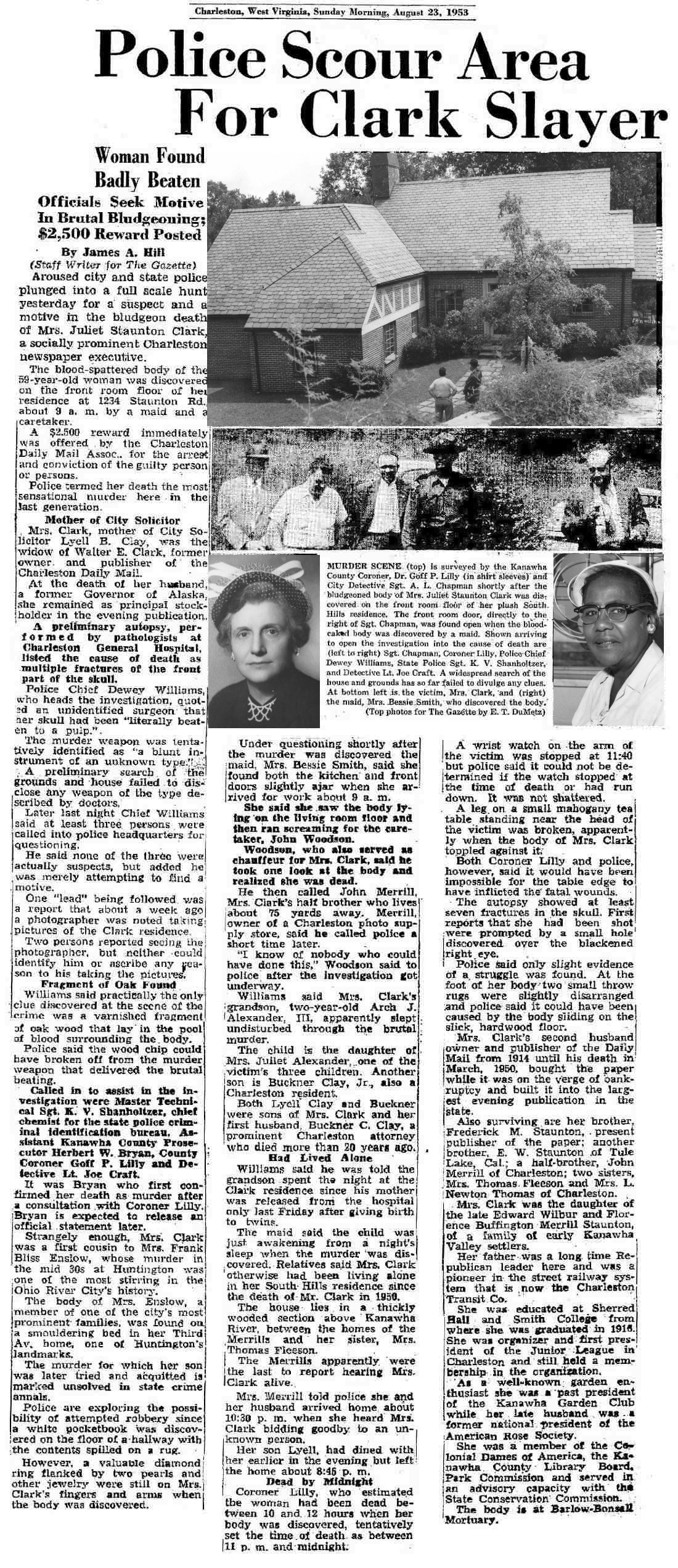
 This article came out on the one year anniversary of her death...
This article came out on the one year anniversary of her death... By 1955, the reward was withdrawn..... By 1955, the reward was withdrawn.....
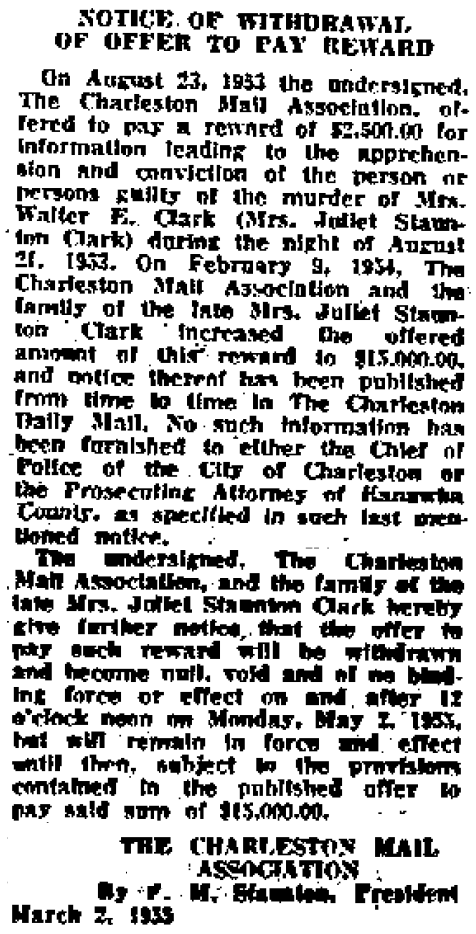
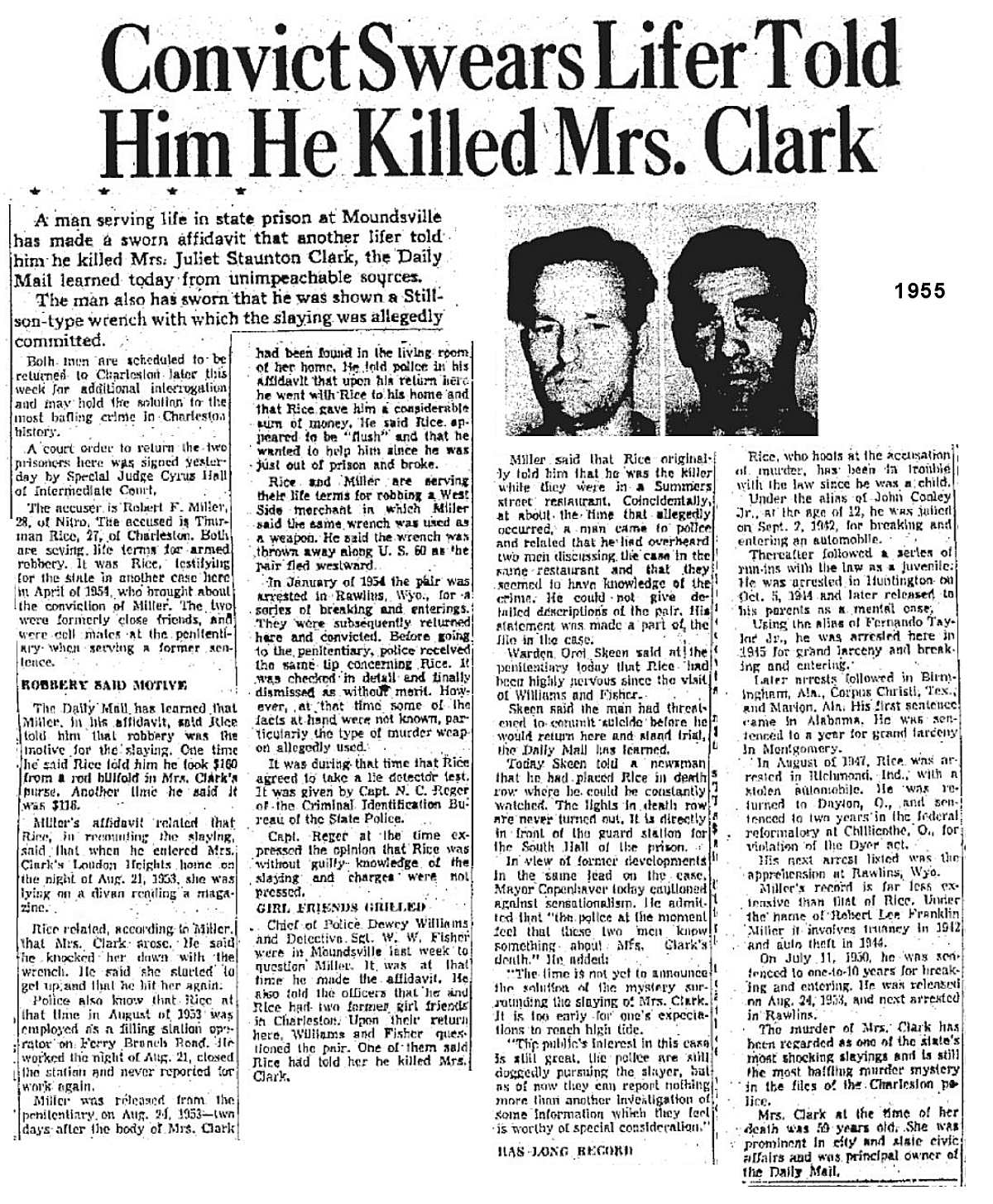 I wondered what happened to the child in the story, and as things can turn from
I wondered what happened to the child in the story, and as things can turn from
bad to worse... it did. This must have been a devastating time for the family...
 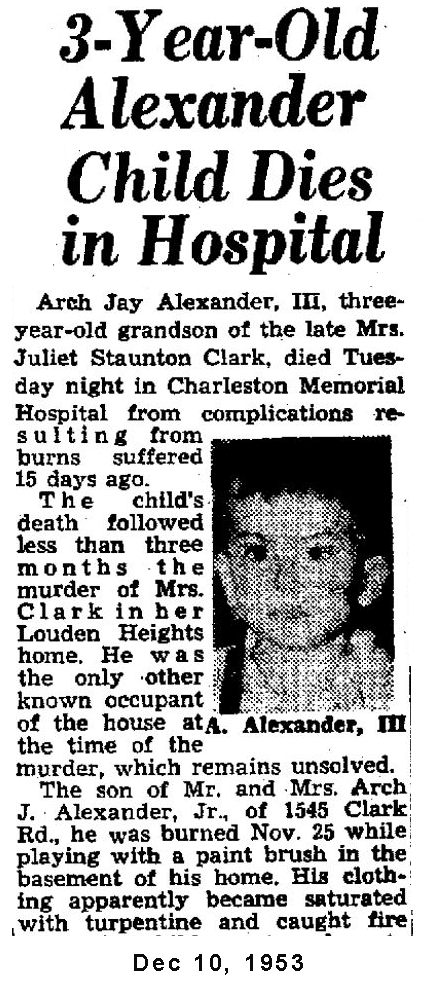 Articles above by The Daily Mail Articles above by The Daily Mail
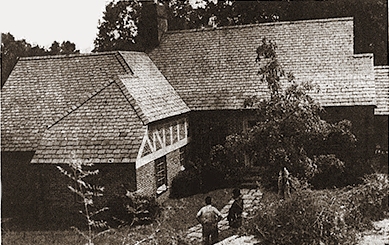
This information below courtesy of the Charleston Gazette Mail
Facts established
during the homicide as reported in press accounts — the only remaining
public record of the investigation — include:
n Clark’s death occurred between 9 p.m. and 11 p.m. on the night of
Aug. 21, 1953, due to loss of blood and trauma from seven skull
fractures caused by blows from a blunt object, in what had to have been
a fit of rage.
n Her 3-year-old grandson, Jay, had been asleep in an adjacent bedroom
when his grandmother was attacked and beaten to death, but did not
awaken until investigators arrived at the murder scene the next
morning. Jay was staying with Clark while his mother recuperated from
giving birth to twin girls, one of whom died, several days earlier.
n Robbery was not considered a motive for the murder, since none of the
many pieces of valuable jewelry owned by Clark had been removed from
her home, including the five diamond rings and diamond-studded watch
she was wearing when her body was found. The home had not been
ransacked, and none of its contents appeared to have been tampered with.
n There were no indications of a forced entry into Clark’s home, or of
a violent struggle in the living room, although an ash tray on a living
room coffee table had been overturned, dislodging a lighted cigarette,
which burned a groove on the table’s surface. Three small rugs on the
living room floor were disarranged, with the murder victim’s body found
face down on one of them.
n Police believe that Clark had been seated on a living room divan,
reading, when the killer entered the house through the seldom-locked
front door. It was assumed, but not conclusively established, that
Clark was acquainted with her killer.
From the time those facts were established within days of the murder
until now, investigators have come no closer to arresting the murderer,
although early on, several persons of interest were detained for
questioning and later released when their innocence was verified.
They included a recently incarcerated West Virginia State Penitentiary
inmate from Kanawha County, a mentally disturbed man who alternately
claimed responsibility for the crime and denied any knowledge of it,
and three young men seen lurking in a section of woods off Staunton
Road, which proved to be the site of a beer stockpile they had cached
and had been drinking.
One member of Clark’s family fell under police suspicion and was
grilled for nearly 14 hours by police, then voluntarily submitted to a
polygraph test and gradually faded from the forefront of police
interest. Another blood relative went on an extended vacation
immediately after the murder, which drew suspicion, not diminished by
his refusal to be polygraphed upon his return. But he soon began to
cooperate with investigators, whose attention turned elsewhere.
Although 30 city police officers were initially assigned to the case,
nominally led by Detective W.W. “Red” Fisher, it was clear that within
one week of the murder, Mayor John Copenhaver had “assumed the position
of chief investigator, interrogator and spokesman to the press,”
according to the book.
It was the mayor who determined that the services of renowned polygraph
expert Dr. Fred Inbau of Chicago’s Northwestern University were needed
to adequately question those connected to Clark. Copenhaver sat in
during many of the lie detector tests and took part in the questioning
of suspects by police.
At one point during the investigation, the mayor spoke to a church
group about the case, unaware that a Charleston Gazette reporter was in
the audience. Copenhaver let it be known that the identity of the
killer was known to him and police investigators, but there was not
enough evidence available to mount a successful prosecution.
Several years later, Tom Tolliver, Clark’s gardener, who was questioned
as a suspect in the early days of the probe, encountered Detective
Fisher by chance in the Sterling Restaurant, and struck up a
conversation about the case. Tolliver said Fisher told him “we had the
person in hand, but the mayor wouldn’t sign a warrant for an arrest.”
|
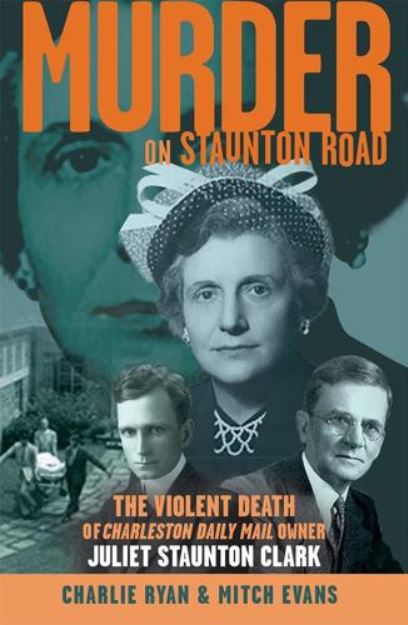
In 2020 "Murder on Staunton Road was published by Charlie Ryan and Mitch Evans. It was a best seller that quickly sold out.
A new book is in the works that may just answer questions that people have been asking for 70 years....
|

Back to the Index
|